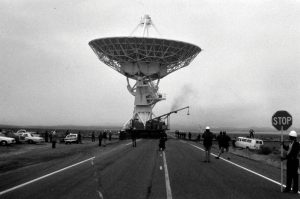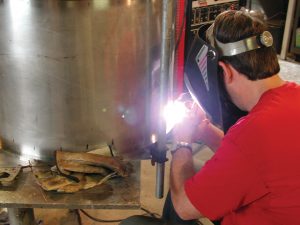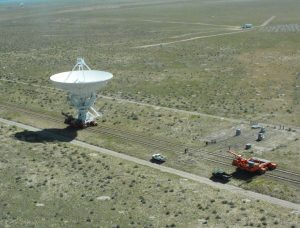These are the four-sided dipole antennas of the Long Wavelength Array on the site of the Very Large Array in central New Mexico. Like the VLA, the LWDA combines the views of its individual antennas into impressive radio images of the sky. Unlike the VLA, however, the LWA antennas cannot dip or turn. To image different parts of the sky, the antennas rely on sophisticated electronics, software, and their four-sided faces.
The LWA is tuned to natural radio waves that are below the range of manmade FM radio broadcast channels to observe pulsars, the Sun and its effects on the planets, and the most distant stars and galaxies in the Universe. In addition, the LWA also studies the radio-bouncing layer of our atmosphere, called the ionosphere.


First VLA Antenna Move Across Highway 60
The Very Large Array in New Mexico can be reconfigured by moving any of its 27 antennas to new positions along 40 miles of double-railed track. Some of the tracks cross the New Mexico highways, as seen during this move in the 1970s.

Welding in Green Bank
Green Bank Welder Patrick Schaffner hard at work welding a base plate to this cylindrical casing.

VLA in A Configuration
In its largest configuration (A), the Very Large Array radio antennas span over 22 miles across the Plains of San Augustin. Separating the antennas by such long distances gives the VLA a zoom-lens feature, bringing smaller details of radio objects into focus.

Antenna Move at the VLA
A 25-meter antenna rides the rails during a scheduled reconfiguration of the Karl G. Jansky Very Large Array. The VLA’s 27 antennas are moved on a regular schedule throughout the year to change the resolution and capabilities of the array.

